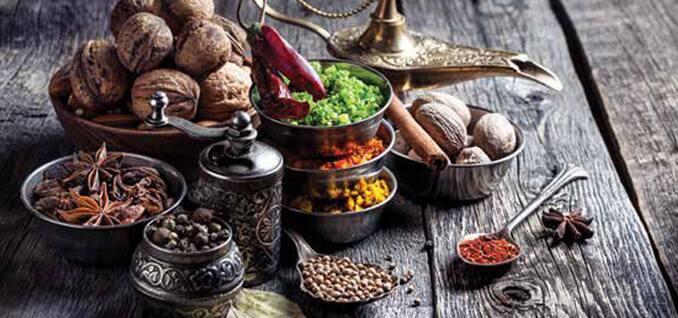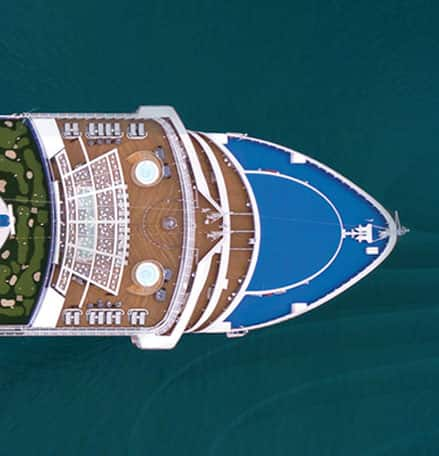Read More
Arabic Cuisine: Inspired by Desert Nomads & Spice Routes
Cardamom-infused coffee, bulgur salads brightened with lemon, parsley and mint; wood-fired flatbread topped with tangy sumac and caramelized onion; lamb laced with coriander, cumin, fennel and clove…exotic flavors and vibrant spices aren’t mere accents in Arabic cuisine. They are the essence of fresh and vibrant dishes across the Arabian Peninsula, which stars in the unique voyages in our Sirena Exotic Collection.
The history of this centuries-old cuisine of nomads, deserts and camel caravans is best taken in dish by dish as you travel from one exotic destination to the next. We caught up with our Senior Vice President of Culinary Operations, Bernhard Klotz, and our Executive Chef & Director of Culinary Enrichment, Kathryn Kelly, to get their insights on this multi-faceted and storied cuisine.
Tracing the Spice Routes
Spices like cardamom, cassia and cinnamon from India, Sri Lanka and China found their way into the Middle East as early as 2000 BC. Thanks to extensive trading with India and other Asian countries along the Spice Routes, Arabs enjoyed a vast array of Indian and other exotic spices long before Europeans. According to Klotz, these aromatic and earthy spices influenced their cooking culture in deep and lasting ways, creating a savory, fragrant cuisine that is distinctive and flavorful.

“Arabic cuisine is intended to delight the eye – as well as the nose and the palate,” Klotz said. “For this reason, dishes are typically a colorful, fragrant and varied affair with many different flavors and tastes.”
Nomadic lifestyle also played a strong role in shaping Arabic culinary traditions and the typical characteristics of dishes, he explained. For example, the cuisine is largely defined by meat. The meat-focused diet of Arab nomads was supplemented with dried fruits such as dates, legumes and spices.
“Arabs used to be nomads, so their cattle, goats, sheep and camels served not only for transportation, but also as a constantly available source of food,” Klotz said. “The importance of legumes can still be seen today in many well-known Arabic dishes. For example, there is the Egyptian national dish ful, consisting of fava beans with meat; falafel, a Syrian and Jordanian specialty made from chickpeas and spices; and hummus, popular in all Arab countries, is also made from chickpeas.”
A Canvas Cuisine
Thousands of years old, Arabic cuisine is an abundant culinary landscape filled with dishes that can be modified and adjusted to suit the setting and the guests gathered around the table.
“I call it a ‘canvas cuisine’ because you make things like labneh or hummus and there are 99 different ways to use it or modify it,” Chef Kelly said. “It’s a cuisine I’m very passionate about and it’s so much fun to teach for that reason – you start with a simple dish and then you can get creative, layering and adding ingredients and pairing different sauces and dips.”
Chef Kelly also pointed out that today’s popular healthy bowls were inspired by the Arab way of eating.
“You might have cooked chicken, three labnehs, hummus, tabbouleh, harissa, tahini with lemon, cucumber sauce and some bread,” she said. “It’s also a cuisine that’s very communal and eclectic. You can have mezze, a family-style dining experience with small shared dishes that excite your taste buds.”
If you’re sailing around the Arabian Peninsula aboard Sirena, you’ll have plenty of chances to explore the flavorful and vast culinary specialties in this corner of the world during your time ashore. You’ll also be able to enjoy Arabic favorites like muhammara dip, fattoush salad, tabbouleh, roast lamb and much more on board at Terrace Café and The Grand Dining Room. Palate piqued? Explore these unusual and far-flung voyages now.












